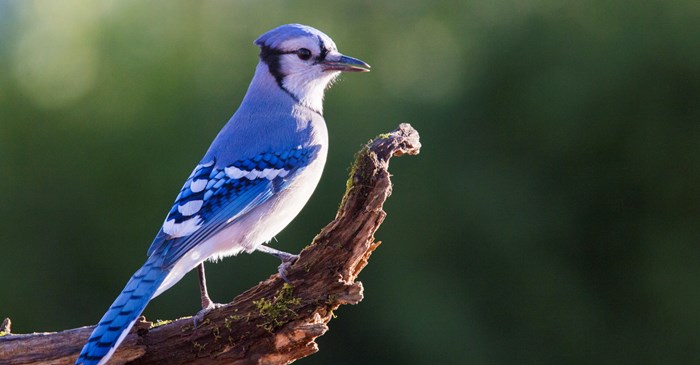Among backyard bird lovers, the Blue Jay has something of a bad bird reputation. Many people think Blue Jays are bullies that eat the eggs of other species. While there is some truth to this, one study found their diets are almost entirely composed of seeds, nuts and insects.
Blue Jays are probably the loudest of your bird neighbors, and their volume does pump up in the fall, which is when they start gathering in flocks. You'll recognize the calling and squawking, as well as their greetings, warnings and other sounds to let the gang know they've found a new source of food! But take a closer look and you will find a complex, interesting creature beneath those striking blue feathers and far-reaching cries.
Blue Jays are known to be great impersonators. They do a decent imitation of a hawk, but explanations vary as to why. Some think this is to scare away their rivals at the feeder, while others think this is to warn others of a predator. When it comes to a colorful display at the feeder, their beauty is undeniable. However, did you know their feathers actually contain no blue pigment? Instead, they appear blue because of the structure of the feather. They scatter light, just as a prism does, and reflect blue wavelengths.
As we ease into fall, some Blue Jays will migrate for the winter, but not all. In fact, their migration patterns are not yet understood by scientists. Those who do travel south, though, will gather in flocks of up to 250 jays before striking out.
As for those Blue Jays staying home this winter, you can attract them with a hearty and nutritious nut and seed mix. Lyric Delite No Waste Mix contains shelled peanuts, sunflower kernels, pecans, pistachios, and shelled pumpkin seeds to provide the winter fuel your backyard birds need.
